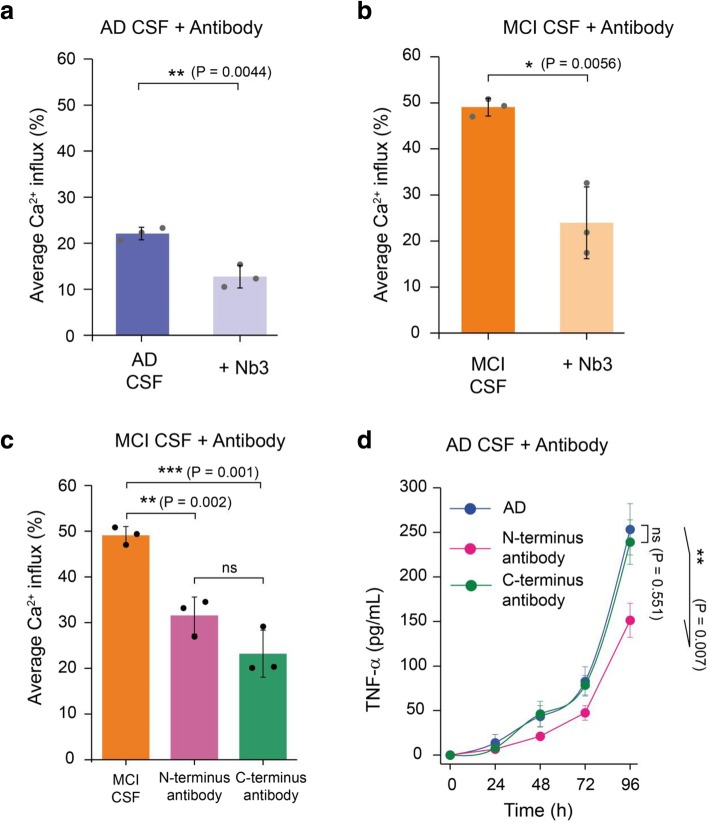Fig. 2.
The toxic soluble aggregates present in MCI and AD CSF contain Aβ. A significant inhibition of the membrane permeabilisation of lipid membranes by (a) AD and (b) MCI CSF samples is caused by a nanobody Nb3 (300 nM) designed to bind to Aβ, indicating that some of the aggregates present in MCI and AD CSF contain Aβ. Nb3 recognises amino acids 17–28 of the Aβ sequence and shown to inhibit toxicity induced by protein aggregates of Aβ cerebrospinal fluid samples from AD patient (c) Both N-terminally and C-terminally targeting antibodies significantly inhibit MCI CSF-induced membrane permeabilisation. However, we do not find any significant difference between their activities. Error bars are the standard deviation among data points. Two sample unpaired t-tests were performed to compare the data sets (n = 3). d A N-terminal binding antibody (binding the region of residues 3–9 of Aβ42) is more potent at reducing the aggregate-induced inflammatory response than a C-terminal designed antibody (binding the region of residues 36–42 of Aβ42); P values are calculated using a two sample t-test to compare the inhibition by an N-terminally binding antibody and a C-terminally antibody at 96 h (n = 3). Error bars are the standard deviation among data points

